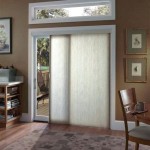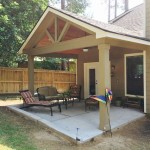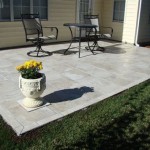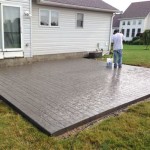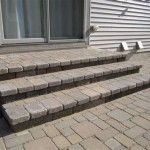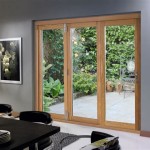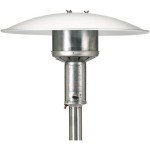Planning Your Bluestone Patio in Costa Rica
Creating an attractive and durable outdoor living space in Costa Rica requires careful planning, particularly when considering materials like bluestone. Bluestone, known for its durability and natural aesthetic, can be an excellent choice for patios, but its suitability for the Costa Rican climate and its installation requirements must be thoroughly assessed. This article explores the critical aspects of planning a bluestone patio in Costa Rica, focusing on climate considerations, material sourcing and installation techniques, and relevant cost factors.
Understanding the Costa Rican Climate and Bluestone
Costa Rica is characterized by a tropical climate with distinct wet and dry seasons. The varying humidity levels and intense rainfall can significantly affect the performance and longevity of outdoor materials. Bluestone, primarily a sedimentary rock composed of feldspar, quartz, and mica, possesses natural resistance to weathering. However, the porous nature of bluestone means it is susceptible to moisture absorption, which can lead to issues such as efflorescence (the migration of salts to the surface), algae growth, and, in rare cases, freeze-thaw damage in higher altitude regions that experience cooler temperatures. Therefore, proper sealing becomes essential to mitigate these risks.
The selection of bluestone should be tailored to the specific microclimate of the property. Areas with high humidity and frequent rainfall require a more resilient and well-sealed bluestone. Darker shades of bluestone tend to absorb more heat, which can make the patio uncomfortable during the hotter months. Lighter shades and reflective sealants can help alleviate this issue. Furthermore, the drainage of the area surrounding the patio must be carefully designed to prevent water from pooling and saturating the bluestone.
Consider the UV exposure. Costa Rica's location near the equator means intense sunlight throughout the year. Prolonged UV exposure can cause some sealants to degrade, necessitating periodic reapplication. Select sealants specifically designed to withstand high UV radiation. Regular maintenance, including cleaning and resealing, is crucial for preserving the integrity and appearance of the bluestone patio in the long term.
Sourcing Bluestone in Costa Rica and Navigating Installation Challenges
Sourcing genuine bluestone in Costa Rica can present challenges. Bluestone is not locally quarried, meaning it needs to be imported. This increases the cost due to shipping, import duties, and potential logistical hurdles. Alternatives may include locally available stone that mimics the aesthetic of bluestone; however, the material properties, such as porosity and durability, will differ. Therefore, careful comparison and testing are necessary before opting for a substitute.
When importing bluestone, ensuring that the supplier provides detailed specifications regarding the material's origin, composition, and treatment is critical. This information helps in selecting the appropriate sealant and installation techniques. Confirming the bluestone's suitability for outdoor use and its resistance to moisture and abrasion is imperative.
Proper installation is pivotal for long-term performance. A well-compacted sub-base is essential for preventing settling and cracking. In areas with unstable soil, a geotextile fabric should be laid beneath the sub-base to provide additional stability. The sub-base material, typically crushed gravel, should be adequately compacted to create a level and stable foundation.
The method of setting the bluestone also impacts durability. A mortar bed provides a robust and permanent installation, but it requires skilled craftsmanship and meticulous attention to detail. Alternatively, a dry-laid installation, where bluestone pavers are set on a bed of sand or gravel, offers more flexibility and easier repairs but is more susceptible to shifting over time. In either case, ensuring proper drainage is crucial to prevent water from accumulating beneath the pavers.
Consider the joints between the bluestone pavers. Wide joints can be filled with polymeric sand, which helps prevent weed growth and erosion. Narrow joints may require mortar filling. Regardless of the chosen joint material, it must be flexible enough to accommodate thermal expansion and contraction without cracking.
Cost Considerations for a Bluestone Patio Project
The cost of a bluestone patio in Costa Rica encompasses several factors, including the cost of the bluestone itself, shipping and import duties, labor costs, and the cost of materials for the sub-base, mortar, and sealant. The price of bluestone varies depending on its thickness, size, and finish. Thicker pavers are generally more expensive but offer greater durability.
Shipping bluestone to Costa Rica can significantly increase the overall cost. Costs are affected by the distance of the material from its origin, the mode of transportation (sea or air), and the import duties levied by the Costa Rican government. Obtaining accurate quotes from multiple suppliers is crucial for comparing prices and identifying the most cost-effective option.
Labor costs also vary depending on the complexity of the installation and the skill level of the installers. Mortar-set installations typically require more skilled labor and are therefore more expensive than dry-laid installations. Obtaining multiple bids from experienced contractors is essential for ensuring a fair price and quality workmanship.
The cost of the sub-base materials, mortar, and sealant should also be factored into the budget. Selecting high-quality materials, even if they are more expensive upfront, can save money in the long run by reducing the need for repairs and maintenance. For example, using a high-quality sealant specifically designed for bluestone can protect the material from moisture damage and extend its lifespan.
Budget contingencies should also be included in the overall project cost to account for unforeseen expenses, such as unexpected site conditions or delays in material delivery. A contingency of 10-15% is generally recommended. Finally, factoring in the cost for regular maintenance, such as cleaning and resealing, is essential for preserving the appearance and integrity of the bluestone patio over time.
Beyond initial cost, longer-term value and maintenance are important to consider. While cheaper alternatives might seem attractive upfront, the lifespan and potential for repairs with something like concrete pavers might outweigh the initial savings in the long run. Bluestone, with proper maintenance, offers both longevity and an aesthetic appeal that can enhance property value.

Bluestone Cleaning Sealing Restoration Tile And Grout Pro

How Often Should I Seal My Bluestone Floors Faqs Cleaning Tiles Tile Cleaners

Bluestone Cleaning Sealing Restoration Tile And Grout Pro

Bluestone Cleaning Sealing Restoration Tile And Grout Pro

Does Sealing My Bluestone Floors Hide Scratches And Etches Faqs Tiles Tile Cleaners

Efflorescence Has Built Up On My Bluestone Tiles Can You Remove It Faqs Stripping And Sealing Floors Tile Cleaners

Custom Patios In Nh Expert Design Installation

Bluestone Grinding Experts Sydney Melbourne Canberra Perth Brisbane Adelaide Gold Coast Tile Cleaners

Flagstone Installation Ontario Green Side Up Contracting

Pennsylvania Blue Stone Pavers From United States Stonecontact Com
Related Posts

